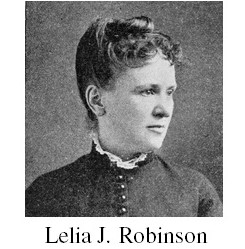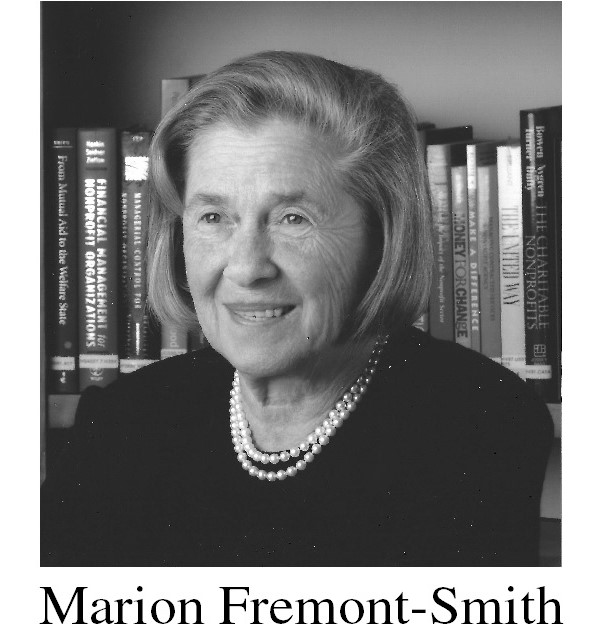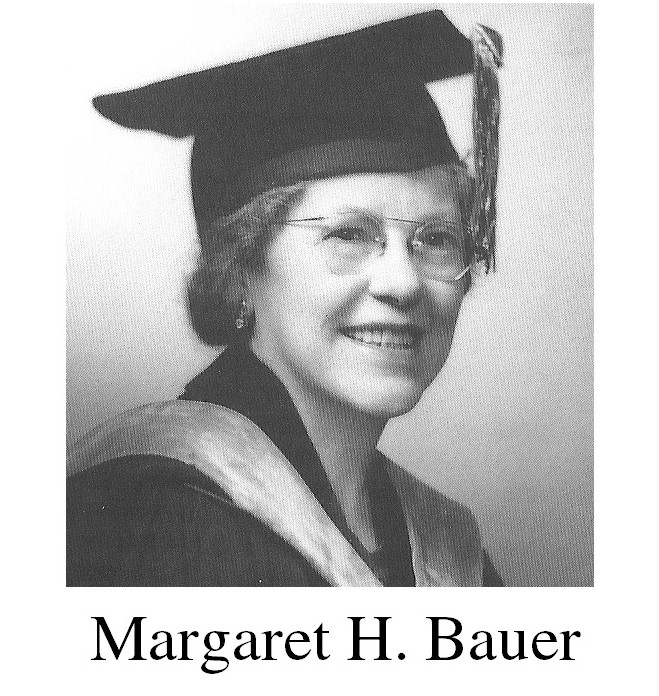| MCLE | New England® | view in browser |
 |
|
| In honor of Women’s History Month |
| MCLE Celebrates the History of Women in the Law |
|
“Do not take sex into the practice. Don’t be ‘lady lawyers’. Simply be lawyers... ” |
|
Attorney Lelia J. Robinson (1850–1891) offered this advice to women ready to navigate the 1880s’ challenges of practicing law while being female. As the first female bar admittee in Massachusetts (in 1882), Robinson started something—a long tradition of Massachusetts women enriching the state’s legal profession with a new and ennobling level of diversity, equity, inclusion, and belonging. Nothing if not incremental, it has been a work-in-progress, a journey measured in decades and quarter-centuries of small and large steps. And it is still unfinished.  Robinson, along with the women who followed her, have been met with countless barriers—from law school, to bar licensure, to employment, to work/family balance, to acceptance in the legal community. Despite having ranked fourth in her class at Boston University School of Law, her application for membership in the bar was summarily and statutorily denied by the Supreme Judicial Court, based on the limiting wording of a state statute. She wisely took her story to The Boston Globe, whose “Spotlight”-style journalism (even back in 1882) garnered public attention for her cause and set a course of action on Beacon Hill. A bill introduced by State Representative John Hopkins erased the statute's gender-limited wording, and Lelia Robinson was finally licensed. Thanks to her persistence, many women had new hope that they, too, could “... simply be lawyers.” Robinson, along with the women who followed her, have been met with countless barriers—from law school, to bar licensure, to employment, to work/family balance, to acceptance in the legal community. Despite having ranked fourth in her class at Boston University School of Law, her application for membership in the bar was summarily and statutorily denied by the Supreme Judicial Court, based on the limiting wording of a state statute. She wisely took her story to The Boston Globe, whose “Spotlight”-style journalism (even back in 1882) garnered public attention for her cause and set a course of action on Beacon Hill. A bill introduced by State Representative John Hopkins erased the statute's gender-limited wording, and Lelia Robinson was finally licensed. Thanks to her persistence, many women had new hope that they, too, could “... simply be lawyers.” But, as Massachusetts history both momentous and anecdotal would suggest, it has not been all that simple: Attorney Robinson soon found each of her applications to the closed-club networks and male-celebrating law firms of the staid City of Boston dismissed out of hand. It would take decades before Massachusetts women were hired as associates in firms, and many are the stories of their marginalized treatment as stenographers and secretaries. When Massachusetts’ employment statute (G.L. c. 151B) was enacted in 1946, around the time World War II soldiers were returning stateside to take up the jobs that women had covered in their absence, the statute omitted gender from employee protections; this was not to change for another two decades, when Title VII protections of the Civil Rights Act of 1964 were enacted. Massachusetts laws gradually began to recognize gender equality, the need for equal pay for women, and accommodations for families: Along with 1965 Mass. Acts c. 397, §§ 4—6, which amended Chapter 151B to provide protection from discrimination based on gender—the Massachusetts Equal Pay Act, G.L. c. 149, § 105A, enacted in 1945, and the Massachusetts Maternity Leave Act, G.L. c. 149, § 105D, enacted in 1972, were significant pieces of legislation that began to define what a Massachusetts workplace could look like, both for women lawyers and the women clients they represented. Times are changing:  In 1964, a young Marion Fremont-Smith (1926–2021) was told by the hiring partner at Choate, Hall & Stewart LLP that it was unlikely the firm would ever promote a woman associate to partner. By 1971, Fremont-Smith was one of only two female partners in the 61-lawyer firm and one of the first female partners in a Boston firm. Today, Choate reports that 41% of its lawyers are women, and 30% of its equity partners are women. In 1964, a young Marion Fremont-Smith (1926–2021) was told by the hiring partner at Choate, Hall & Stewart LLP that it was unlikely the firm would ever promote a woman associate to partner. By 1971, Fremont-Smith was one of only two female partners in the 61-lawyer firm and one of the first female partners in a Boston firm. Today, Choate reports that 41% of its lawyers are women, and 30% of its equity partners are women. Established in 1692, the Massachusetts’ Supreme Judicial Court was male-only during its first 285 years; it was not until 1977 that Justice Ruth I. Abrams (1930–2019) was sworn in as the court’s first female justice, and it took another two decades for the second female justice, Margaret Marshall to join the SJC. Over the past 23 years, eight more female justices ascended to that bench, and two women (Justice Marshall and Justice Kimberly S. Budd) assumed the role of chief justice.  As with Massachusetts’ firms and its courts, the progression of women into law school academia has been slow, incremental, and at times surprising: Portia Law School, considered a ground-breaking institution when it was founded in 1908 as a law school for women, failed to entrust to a woman its top academic role until 1952, when Margaret H. Bauer (1899–1985) was appointed dean. Harvard Law School’s first 186 years saw a progression of male deans; incredibly, it was not until 2003 that the post was finally filled by a woman, Elena Kagan, who now serves as an associate justice of the U.S. Supreme Court. As with Massachusetts’ firms and its courts, the progression of women into law school academia has been slow, incremental, and at times surprising: Portia Law School, considered a ground-breaking institution when it was founded in 1908 as a law school for women, failed to entrust to a woman its top academic role until 1952, when Margaret H. Bauer (1899–1985) was appointed dean. Harvard Law School’s first 186 years saw a progression of male deans; incredibly, it was not until 2003 that the post was finally filled by a woman, Elena Kagan, who now serves as an associate justice of the U.S. Supreme Court. Many are the women who have shaped the legal community in Massachusetts over the past 141 years since Lelia Robinson’s admission to the bar. Their career trajectories have brought not only diversity, equity, inclusion, and belonging to the profession, whether in private practice, public legal services, government, bar leadership or academia. Like Attorney Robinson before them, countless Massachusetts women lawyers – “simply lawyers” – have spoken words of encouragement to their “sisters in law”. Their wisdom reflects a deep diversity of gifts along with a commonality of spirit: |
|
“I feel that the example I have given to all four of my children – finding meaning in life by contributing to larger issues and helping others through our profession – is one of the most important values that I can pass on to them, and ultimately to the next generation.” Hon. Valerie Yarashus, reflecting on her past service as president of the Massachusetts Bar Association. “We don’t have to be tougher than the toughest male and we can bring a humanity to the courts. I see that now as a strength and not a weakness. I only hope that young female lawyers have people who look like them, talk like them, and can be the role models we all hoped for.” Attorney Janice Bassil, on her experience as a courtroom lawyer. “It would not make a difference to my mother [were she alive] that I’m going on the SJC. It would make a difference to her that I’m a good judge.” Hon. Martha B. Sosman (1950–2007), on the day she was sworn in at the Supreme Judicial Court. “... After the court granted the restraining order and the case was over, my client told me, ‘This is the first time that someone has stuck up for me.” Attorney Beth I. Z. Boland, recounting her client’s words of relief as they left the courthouse. “For me, the challenge of being a Black, female practitioner is and always has been overcoming what I will call “the discomfort of difference.” Not my discomfort... I am speaking of the discomfort of colleagues, clients, and others in the world.” Attorney Stephanie Lovell, on encountering racial and gender bias in her practice of law. “What I have learned is that change—real and substantial change—is possible. I study struggles for racial justice and efforts for gender equality, disability rights, minority language rights, religious freedom, and other efforts for an inclusive and just society; and despite deep disappointments and frustrations in each of these arenas, my own life’s course suggests the promise of change through law.” Professor Martha Minow, on being the third woman to join Harvard Law School’s faculty. “... You can never discount gender, race, or class—these are aspects of ourselves that influence who we are and how we do our work.” Attorney Carol Rose, on her work as executive director of the American Civil Liberties Union of Massachusetts. |
| The words quoted herein are found in the MCLE Legal Heritage Series publication, Breaking Barriers: The Unfinished Story of Women Lawyers and Judges in Massachusetts available here. All proceeds from sales of the book support MCLE’s Scholarship Endowment. |
| About MCLE: Massachusetts Continuing Legal Education, Inc. (MCLE | New England®) aims to keep raising the caliber of lawyers’ professional and ethical service to their clients and communities by providing comprehensive and practical continuing legal education of the highest quality to the broadest possible audience. |
|

|
| MCLE | New England® is a registered trademark of Massachusetts Continuing Legal Education, Inc., 10 Winter Place, Boston, MA 02108. |
| Contact us at customerservice@mcle.org or visit our website at www.mcle.org. |
| To be removed from all MCLE email lists, please click here. |
| To view this email in your web browser, click here. |
|
|